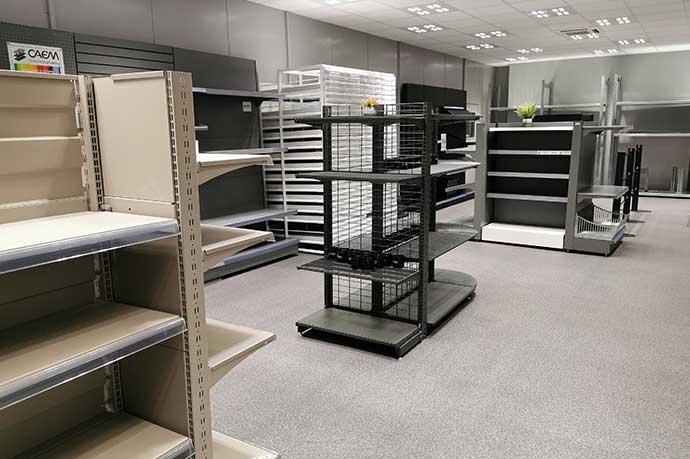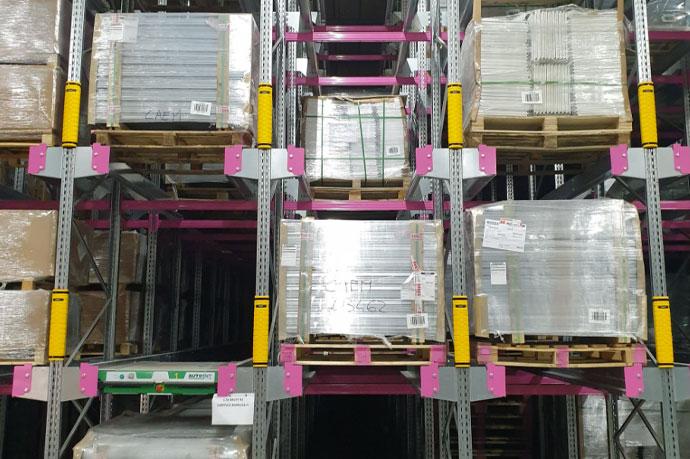In the world of retail and storage, shelving systems play a crucial role in ensuring that products are displayed and stored safely and efficiently. However, the science behind shelving weight loading is often overlooked. This blog post delves into the intricacies of shelving weight loading, exploring material properties, the behavior of steel, and the essential 1-2-3 cascade of rules for cantilever shelving.
The Basics of Shelving Weight Loading
Shelving weight loading refers to the maximum weight that a shelving unit can safely support. This is a critical consideration in both retail and industrial settings, where overloading shelves can lead to structural failure and safety hazards. Understanding the principles of weight loading helps in designing shelves that are both safe and functional.
Material Properties: The Role of Steel
Steel is the primary material used in shelving due to its strength and durability. The behavior of steel under stress is fundamental to understanding shelving weight loading. Steel exhibits both elastic and plastic properties:
Elasticity: When stress is applied to steel, it deforms but returns to its original shape once the stress is removed, as long as the stress does not exceed the material's yield point.
Plasticity: If the stress exceeds the yield point, the steel undergoes plastic deformation, meaning it will not return to its original shape. This is crucial in manufacturing processes like bending, where steel is shaped into shelves.
Understanding these properties helps in designing shelves that can withstand the loads they are expected to carry without permanent deformation.
The 1-2-3 Cascade of Rules for Cantilever Shelving
Cantilever shelving, commonly used in retail environments, operates on a set of principles that ensure stability and safety. The 1-2-3 cascade of rules is a framework that guides the design and use of these shelving systems:
Upright and Base Connection: The connection between the upright and the base is critical. This connection must withstand the torque created by the weight of the shelves and their contents. A well-designed connection distributes the load evenly and prevents tipping.
Brackets: Brackets support the shelves and must be designed to handle the load without bending. The number of hooks and the design of the bracket body are crucial in determining how much weight a bracket can support. The bracket must remain within its elastic limit to prevent permanent deformation.
Shelves: The shelves themselves must be capable of supporting the load without excessive deflection. The design of the shelf, including its thickness and the presence of stiffeners, determines its load-bearing capacity. The shelf must remain stable under load to prevent items from falling.
Practical Considerations in Shelving Design
When designing shelving systems, several practical considerations must be taken into account:
Load Distribution
The distribution of weight across a shelf significantly affects its performance. Evenly distributed loads are ideal, as they minimize stress on any single point. Uneven loads can lead to increased torque and potential failure.
Dynamic vs. Static Loads
In some environments, shelves must withstand dynamic loads, such as when heavy items are placed quickly onto the shelves. This requires additional consideration in the design to ensure that the shelving can handle these impacts without failing.
Safety and Stability
Safety is paramount in shelving design. The shelving must be stable under load, and considerations such as wall fixing and the potential for dynamic movement must be addressed. Ensuring that the shelving remains within its elastic limits and does not deflect excessively is crucial for safety.
Testing and Standards
Testing is an essential part of the shelving design process. Shelving systems must be tested under real-world conditions to ensure they meet safety standards. This includes testing for deflection, load capacity, and the effects of dynamic loads.
Standards and norms provide guidelines for designing and testing shelving systems. While not always legally required, adhering to these standards ensures that shelving systems are safe and reliable.
The Impact of Shelf Dimensions on Load Capacity
When it comes to shelving, the dimensions of the shelves—both in terms of depth and width—play a critical role in determining their load capacity. Understanding why an 80cm deep shelf holds less weight than a 40cm shelf, and why a 120cm wide shelf holds less than a 100cm shelf, involves delving into the concepts of torque and deflection.
Depth and Torque
The depth of a shelf significantly affects its ability to support weight due to the principle of torque. Torque is the rotational force that occurs when a load is applied at a distance from the axis of support. In the context of shelving, this axis is typically the connection point between the shelf and the upright.
Deeper Shelves and Increased Torque: When a shelf is deeper, the load is positioned further away from the axis of support. This increased distance amplifies the torque exerted on the shelf and its supports. For example, an 80cm deep shelf places the load further from the upright compared to a 40cm shelf, resulting in greater torque. This increased torque can lead to more significant bending and stress on the shelf and its supports, reducing its overall load capacity.
Width and Deflection
The width of a shelf also impacts its load-bearing capacity, primarily through the concept of deflection. Deflection refers to the bending or sagging of a shelf under load.
Wider Shelves and Greater Deflection: A 120cm wide shelf spans a greater distance between its supports compared to a 100cm shelf. This increased span means that the shelf is more prone to bending under the same load, as the material must support the weight over a longer distance. The greater the deflection, the less stable the shelf becomes, which can compromise its ability to safely hold heavy loads.
Practical Implications
These principles have practical implications for shelving design and use:
Design Considerations: When designing shelving systems, it's crucial to account for the increased torque and deflection associated with deeper and wider shelves. This might involve using stronger materials, additional supports, or limiting the load capacity to ensure safety and stability.
Load Distribution: Ensuring that loads are evenly distributed across the shelf can help mitigate some of the effects of torque and deflection. However, the inherent limitations due to shelf dimensions must still be respected to prevent structural failure.
By understanding the impact of shelf dimensions on load capacity, manufacturers and users can make informed decisions about the design and use of shelving systems, ensuring they are both safe and effective for their intended applications.
In Summary
Understanding the principles of shelving weight loading is essential for designing safe and effective shelving systems. By considering material properties, the 1-2-3 cascade of rules, and practical design considerations, manufacturers can create shelving that meets the needs of both retail and industrial environments. As the demands on shelving systems continue to evolve, staying informed about the latest standards and testing methods will be crucial for ensuring safety and performance.





